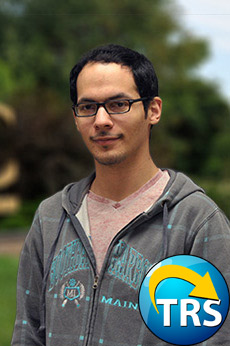Physics
“Numerical Modelling of the Gamma-Ray Emission Detected from Extragalactic Relativistic Jets”

There is currently a mismatch between our observational and theoretical capabilities in our effort to understand the gamma-ray variable emission of blazars coming from the vicinity of a black hole. NASA’s Fermi gamma-ray satellite shows extreme variability in blazars and currently we lack the tools for modelling these variations accurately and understand the physical conditions experienced in these extreme environments. What is usually done with the one zone numerical models available is to model a snapshot of the event and not the entire time evolution of the flares. This does not allow us to gain insight on the physics of the variability. Our goal is to develop realistic numerical simulations to model the variable gamma-ray emission of luminous blazars, powerful relativistic jets emanating from the vicinity of the supermassive black holes found in the centers of active galaxies. The codes developed will become publicly available so that the wider astrophysics community will have access to them.
Who is your mentor for your research project?
Markos Georganopoulos
How did you arrange to work with this person?
I asked my advisor which professors were doing research in the astrophysics field and his name came up. I had been taking his class at the time and when I asked what he was doing specifically, I was immediately interested.
How did you know this was the project you wanted to do?
It seemed like a real challenge and I had a real interest in the subject matter. Once I realized how little I really knew about AGN and relativistic physics, I wanted to learn more.
Is this your first independent research/scholarship/artistic project?
Yes, I have been learning everything I’m doing as I do it.
Do you get course credit for this work?
Yes, I am taking time during the semester to focus on the project which my mentor has allowed me to use as course credit.
How did you hear about the Undergraduate Research Award (URA) program?
My mentor introduced me to it.
What academic background did you have before you applied for the URA?
I hadn’t done any research before starting this and I had only been pursuing a physics degree for a semester before seeking a research opportunity.
How much did your mentor help you with the application?
My mentor gave me a template to follow for the application which was very helpful since I had yet to have a full grasp of the specifics of the project.
What has been the hardest part about your research?
Learning the basics of the physics and concepts behind the processes that we’re analyzing independently has been a real challenge. Recently, I’ve also been learning how to work on and edit complex programs in C as well as how to work with Linux.
What was the most unexpected thing?
The amount of things that I’ve had to learn to even start making progress in this project has been much more than I expected but I’ve been enjoying the challenge.
How does your research relate to your work in other classes?
Special relativity, data analysis, and modelling are all concepts introduced in Computational Physics and Modern Physics. These are essential for the research I’m doing.
What is your advice to other students about getting involved in research?
Take the opportunity if you can find it. It is eye opening and satisfying when you reach personal milestones. Find a mentor that you feel comfortable with. Take it as seriously as you would school work.
Did you transfer to UMBC from another institution? Where?
I transferred with an Associates of Arts Transfer Studies from AACC with a major focus on Communications.
9/2/2016